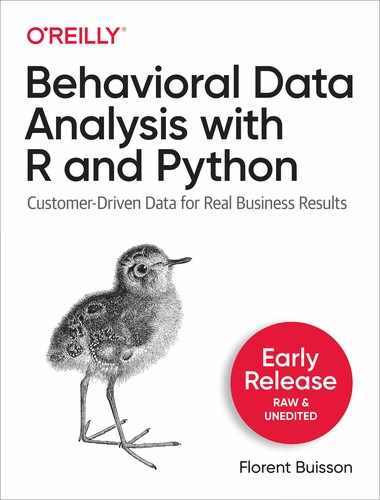Book Description
Most of the data that companies collect is related to customer behaviors, such as clicks on a website or purchases in a supermarket. But data science algorithms and predictive analytics tools aren’t that specific, so customer data is treated the same way as, for example, astronomical or genomic data. This practical guide introduces powerful methods for behavioral data analysis that you’re probably not aware of.
Advanced experimental design will help you get the most out of your A/B tests, while causal diagrams will allow you to tease out causality from correlation even when you can’t run experiments. Written in an accessible style for data scientists, business analysts, and behavioral scientists, this practical book provides complete examples and exercises in R and Python to help you gain more insight from your data—immediately.
- Understand the specifics of behavioral data
- Explore the differences between measurement and prediction
- Learn how to clean and prepare behavioral data
- Design and analyze experiments to drive optimal business decisions
- Use behavioral data to understand and measure cause and effect
- Segment customers in a transparent and insightful way
Table of Contents
- 1. Behaviors, Causality, and Prediction
- 2. Online Streaming Experiment
- 3. Experimental Design 2: Online Population-Based Experiment
- 4. Experimental Design 3: Offline Population-Based Experiment
